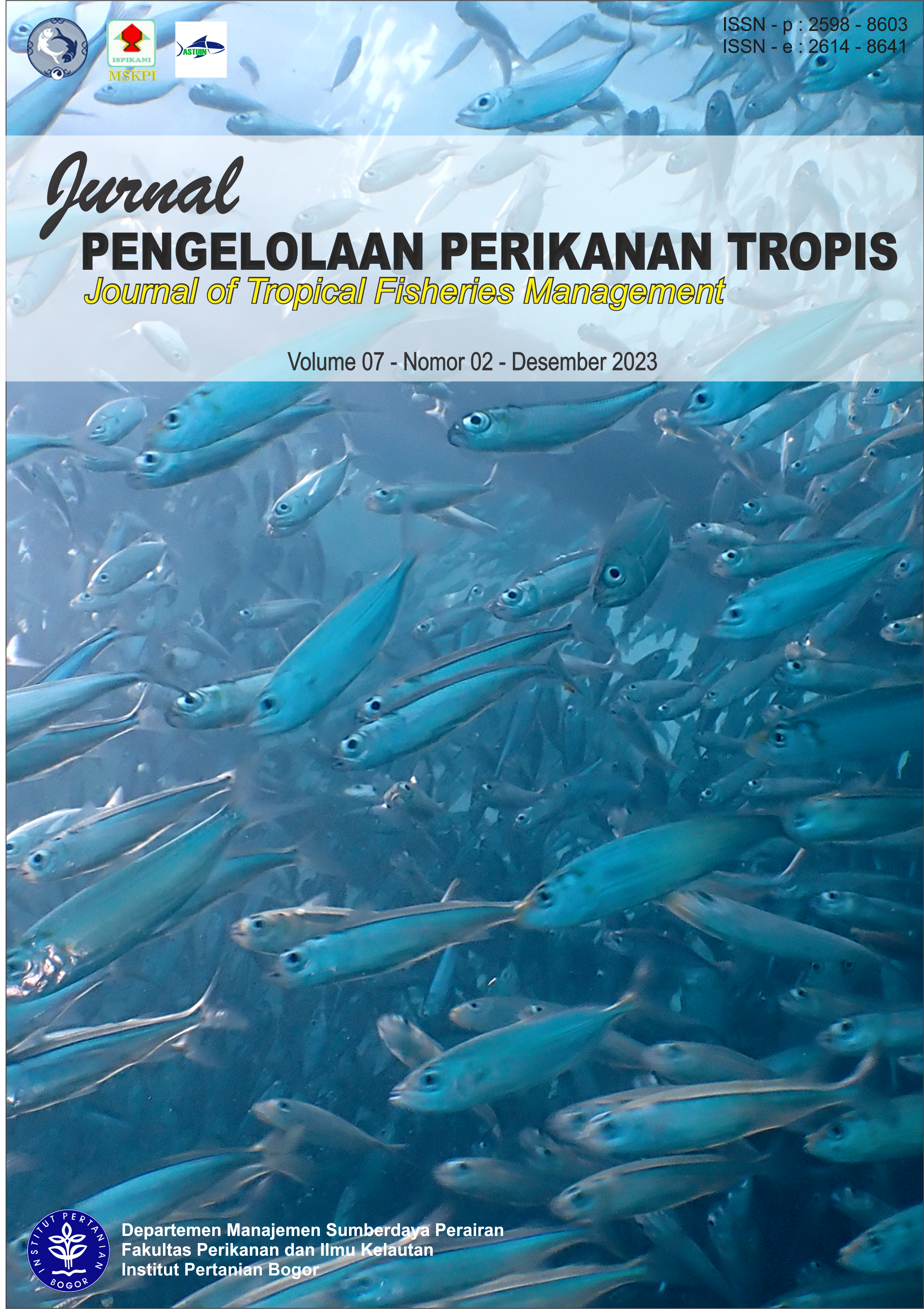Optimizing The Potential and Development Strategy of The Mangrove Ecotourism Area in Tangkolak Village, Karawang Regency
Optimalisasi Potensi dan Strategi Pengembangan Kawasan Ekowisata Mangrove di Dusun Tangkolak, Kabupaten Karawang
Abstract
The Tangkolak mangrove ecotourism area is one of natural attractions, namely a mangrove forest in Sukakerta Village, East Cilamaya Sub-district, Karawang Regency, West Java Province. The mangrove ecotourism of Tangkolak currently have no management and low visitor. This research aims to describe the potential and identify applicable strategies through internal-external factor analysis within the Tangkolak mangrove ecotourism area. Four station points revealed a potential of 14 mangrove vegetation species and 10 fauna species. The most mangrove species all stations is Rhizophora apiculata, while the dominant fauna is Ciconia sp. The mangrove vegetation in the Tangkolak mangrove ecotourism area exhibits a low diversity index (H') and there’s no dominating species in each stations, whereas the fauna in the area showcases varied diversity index values with Ciconia sp. as the dominant species. Visitors and local fishermen in the surrounding community utilize fishing tools like a fishing rods, traps, and nets when catching fish in the vicinity of the mangrove ecotourism area. The development strategy is determined using SWOT analysis. The results of IFAS and EFAS analyses indicate that the development strategy for the Tangkolak mangrove ecotourism area falls within the coordinates (2.5; 2.6) in quadrant I, signifying a combination of strengths and opportunities (SO strategy).
Downloads
References
Firman A, Soeprijadi L, Pasaribu R. 2020. Kajian Hidro-Oseanografi di Perairan Kabupaten Karawang. PELAGICIUS: Jurnal IPTEK Terapan Perikanan dan Kelautan, 1 (1): 39-51.
Anderson DR, Burnham KP, Thompson WL. 2000. Null Hypothesis Testing: Problems, Prevalence, And An Alternative. Journal of Wildlife Management, 64(4): 912-923.
Diarto B, Hendrarto S, Suryoko. 2012. Partisipasi Masyarakat Dalam Pengelolaan Lingkingan Kawasan Hutan Mangrove Tugurejo di Kota Semarang. Jurnal Ilmu Lingkungan, 10(1):1-7.
Fauzi AI, Anjar DS, Lissa FY, Agung BH, Lilik BP, Bambang I, Ketut W. 2018. Evaluating Mangrove Forest Deforestation Causes in Southeast Asia by Analizing Recent Environment and Socio-Economic Data Product. Proceedings Asian Conference on Remote Sensing. 880-889
Rangkuti F. 2014. Analisis SWOT: Teknik Membedah Kasus Bisnis. Jakarta: PT Gramedia Pustaka Utama
Renta PP, Pribadi R, Zainuri M, Anggraini M, Utami F. 2016. Struktur Komunitas Mangrove di Desa Mojo Kabupaten Pemalang Jawa Tengah. Jurnal Enggano. 1(2):1-10.
Roshayani A, Widyastuti D. 2019. Exploring The Adoption Of E-Learning In Higher Education: A Mixed-Method Study In Indonesia. Turkish Online Journal of Distance Education, 20(4): 65-81.
Copyright (c) 2024 Journal of Tropical Fisheries Management

This work is licensed under a Creative Commons Attribution 4.0 International License.
After the article is submitted and published in this journal, it is fully copyrighted by the Journal of Tropical Fisheries Management. If excerpts from other copyrighted works are included, authors must obtain written permission from the copyright owner and give credit to the source in the article. Then, authors or reader is allowed to copy, share, and redistribute articles/material in any form. But it must still include the appropriate source and credit because the article in this journal is licensed by Creative Commons Attribution 4.0 International License (CC BY 4.0).



1.png)
1.png)








